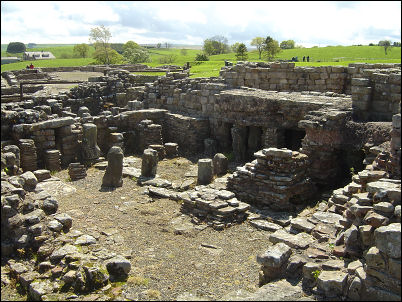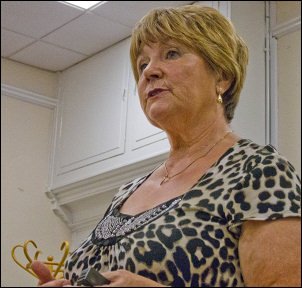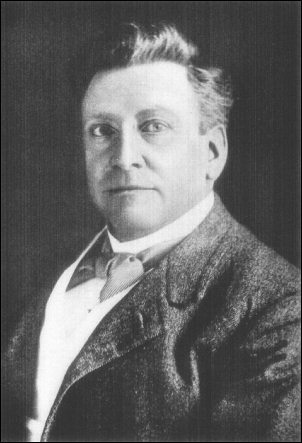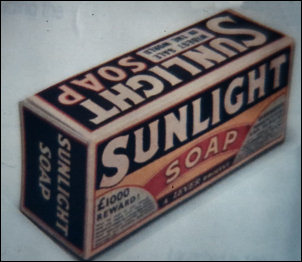|
|
|
|
|
Aug 2012 |
|
|
|
Vindolanda and
Cragside Weekend 25/26 August 2012 |
A group of 30 members and
friends left Chorley early on Saturday for a trip to
Northumberland.
First stop was Vindolanda, the site of impressive Roman
excavations close to Hadrian’s Wall. We arrived just in time for
the 11.15 tour of the site, run by the Vindolanda Trust. Our
group joined other visitors on a tour conducted by an
enthusiastic, entertaining, South African guide called Neill who
moved at quite a pace around the site. |
|
|
Neill
took us on a rapid 45 minute sweep around the
excavations of the village, bath house and the fort
itself, ending up at the informative museum, visitors’
centre and a well needed coffee shop.
After lunch, we were left to explore the site and the
museum which holds an impressive collection of finds. In
particular is a selection of Roman writing tablets
loaned to the Trust by the British Museum. When the
excavations started in the late 1940s it was thought to
be finished in 30 years. But as the years have passed
and the size of the site increased it is now thought
that it could take up to around 200 years.
We left Vindolanda at 3.00 for the hour’s drive to the
Jurys hotel in central Newcastle-upon-Tyne. This gave an
opportunity for anyone to explore the city centre and
sample the Geordie capital. After a pleasantly spent
night, save for an early morning fire alarm evacuation,
which was, thankfully, a false alarm and it didn’t rain. |

Vindolanda Bath House |
|
| |
|
|
A
reasonable early start saw us make the 35 mile journey
north west to Cragside, near Rothbury.
This National Trust property is described as “The Palace
of a Modern Magician” It was home to (Lord) William
Armstrong (1810-1900), who was a scientist and technical
innovator and made his wealth from the arms industry.
Cragside, set in acres of wooded landscapes, is, not
surprisingly, set at the foot of a crag. Electricity,
generated by water power, powered all sorts of gadgets.
No doubt to impress visitors but also aided the servants
in their daily tasks. For example a hydraulic lift and
an early type of dish washer. In fact, the library was
the first room in the world to be lit with a newly
invented filament light bulb, a type that is still
working today.
We had 5 hours to explore the house along with the
formal gardens and woodland walks. The formal gardens
include an impressive flower bed laid out to represent
the Olympics and the flowers were in full summer bloom.
The main lake even had fountains of water coming out of
it, which danced to music at frequent intervals during
our time there. |

Cragside House |
|
|
The numbers of
visitors there showed what a popular place Cragside is to visit
with its many attractions. Fortunately we avoided the worst of
the weather, which added to the pleasure of the visit.
Unfortunately, our time to depart came all too quickly but
Andrew, our driver, took us through some stunning Northumberland
countryside to round off an excellent weekend.
Big thanks must go to Christine Harrison for her time and effort
in arranging a full and varied weekend.
Peter Robinson
|
|
|
|
Sylvia O’Malley – on Lord Leverhulme
Tue 14 Aug 2012 |
|
Sylvia, a Blue
Badge tourist guide for north west England, specialises in
Merseyside subjects, which includes Port Sunlight and Lord
Leverhulme.
William Hesketh Lever was born in Wood Street, Bolton, a son of
a wholesale greengrocer. He was apprenticed as a soap cutter in
the family business but left that at the age of 16 to become a
salesman within the trade. He had been given a book, entitled
‘Self Help’ by Samuel Smiles, which served as his inspiration to
better himself.
It served him well as he became very successful and moved from
the selling of soap to its production and to facilitate this he
needed a factory and land to build it on. |

Sylvia O’Malley |
|
He purchased
land at Bromborough on the Wirral and proceeded to build his
factory to produce soap and get people to work in it. He never
forgot his roots and the bad conditions of the working people in
the towns and cities of Lancashire. He aspired to give his
workforce better living and working conditions providing them
with a purpose built village close to the factory for them and
called it Port Sunlight.
Innovations such as paid holidays for his workers and the
encouragement of sports participation for them were introduced.
A more contented workforce was a profitable one.
|

William Hesketh Lever |
|
Indeed, his
business empire grew so much that he became fabulously wealthy.
He became a collector of the finest works of English craftsmen,
in particular ceramics. With his wealth he also gained a title,
Lord Lever. To house a particular large painting he built a
gallery to house it, the Lady Lever Art Gallery, named after his
wife, Elizabeth Helen Hulme, a childhood sweetheart. |

The Lady Lever Art Gallery was originally
built to house this painting as it was so big. |
|

|
 |
|
Lord Leverhulme
was responsible for many household products.
|
|
He was a
religious man, a patriot, a great self publicist and whatever he
designed, built or bought reflected this. It was only after his
wife’s death in 1913 that he gained the title of Viscount Lord
Leverhulme of Bolton in the Moor.
Not only did he build Port Sunlight but he also bought the
nearby village of Thornton Hough. The buildings he built there
included a fine church and a cottage hospital. He lived at a
former shipping magnate’s mansion in the parish. Once open to
the public but now an exclusive country house hotel.
He built up a huge art collection that, at the time of his
death, filled 8 houses, much of it now housed in the art
gallery. He also bought land and properties, not just in Britain
but overseas as well. His name lives on in, for example, Zaire
in a town called Leverville but also much closer to home in the
parkland he created at Rivington.
Sylvia showed a wide variety of slides and gave an enthusiastic
audience a fresh perspective to a well known historic figure.
Peter Robinson
|
|
|
|
|
|
|
|